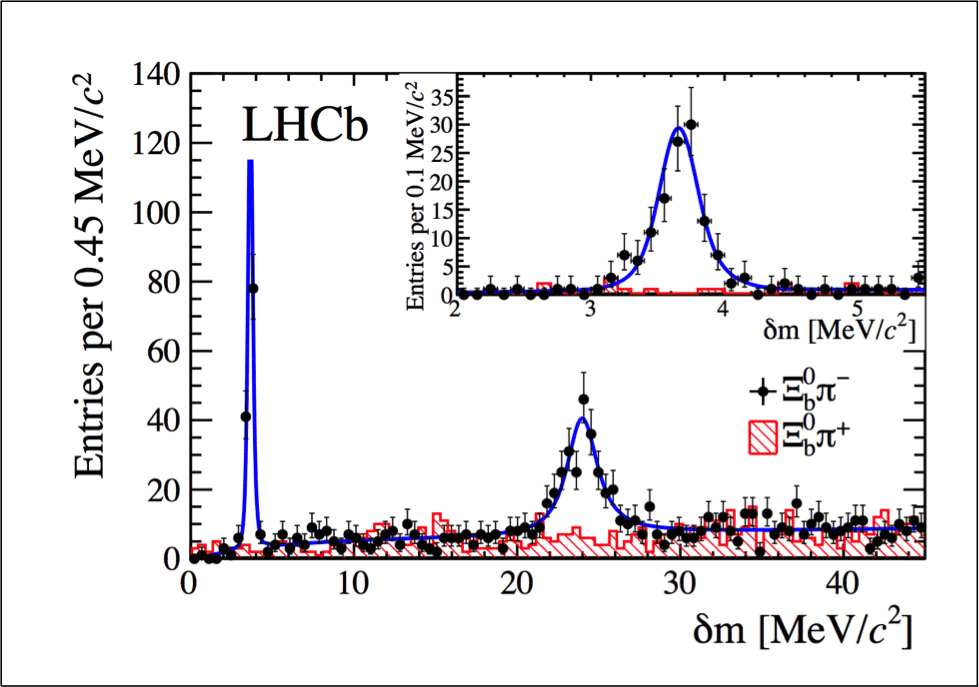While the LHC at CERN is gearing up for its long-awaited restart, following an overhaul, scientists aren’t standing idle. After analyzing collision data made during 2011-2012, physicists have identified two new baryons, known as the Xi_b‘- and Xi_b*-. The new subatomic particles’ properties match predictions based on the theory of Quantum Chromodynamics (QCD), a subset of the Standard Model of particle physics – the governing theory that describes the fundamental particles of matter, how they interact, and the forces between them.
Three quarks, one baryon, two new particles

View of the CMS detector at the end of 2007. (Maximilien Brice, © CERN)
Baryons are composite particles comprising three quarks bound together by the so-called strong force. As such, protons (two up and one down) and neutrons (one up quark and two down quarks) are also baryons. Since there are six flavors of quarks (and six anti-quarks), baryons can combine in numerous renditions. It’s no surprise, with this in mind, that baryons comprise most of the visible matter.
The new Xib particles confirmed at CERN, being baryons, are also comprised of three quarks as follows:
- both contain one beauty (b), one strange (s), and one down (d) quark;
- yet they differ by spin – a fundamental attribute for any particle;
- in the Xi_b‘- state, the spins of the two lighter quarks point in opposite directions, whereas in the Xi_b*- state they are aligned. This difference makes the Xi_b*- a little heavier.
- each of the Xib particles is, on average, six times as massive as the proton.
“Nature was kind and gave us two particles for the price of one,” said Matthew Charles of the CNRS’s LPNHE laboratory at Paris VI University. “The Xi_b‘- is very close in mass to the sum of its decay products: if it had been just a little lighter, we wouldn’t have seen it at all using the decay signature that we were looking for.”
“This is a very exciting result. Thanks to LHCb’s excellent hadron identification, which is unique among the LHC experiments, we were able to separate a very clean and strong signal from the background,” said Steven Blusk from Syracuse University in New York. “It demonstrates once again the sensitivity and how precise the LHCb detector is.”
Why this is important for physics

The mass difference spectrum: the LHCb result shows strong evidence of the existence of two new particles the Xi_b’- (first peak) and Xi_b*- (second peak), with the very high-level confidence of 10 sigmas. The black points are the signal sample and the hatched red histogram is a control sample. The blue curve represents a model including the two new particles, fitted to the data. Delta_m is the difference between the mass of the Xi_b0 pi- pair and the sum of the individual masses of the Xi_b0 and pi-. INSET: Detail of the Xi_b’- region plotted with a finer binning.
Besides mass, the researchers also looked at important decay parameters like width, which is a measure of how unstable the particle is. The most important part of the experiment is that scientists have confirmed the subatomic particles’ existence in the first place.
“If we want to find new physics beyond the Standard Model, we need first to have a sharp picture,” said LHCb’s physics coordinator Patrick Koppenburg from Nikhef Institute in Amsterdam. “Such high precision studies will help us to differentiate between Standard Model effects and anything new or unexpected in the future.”
Scientific reference









